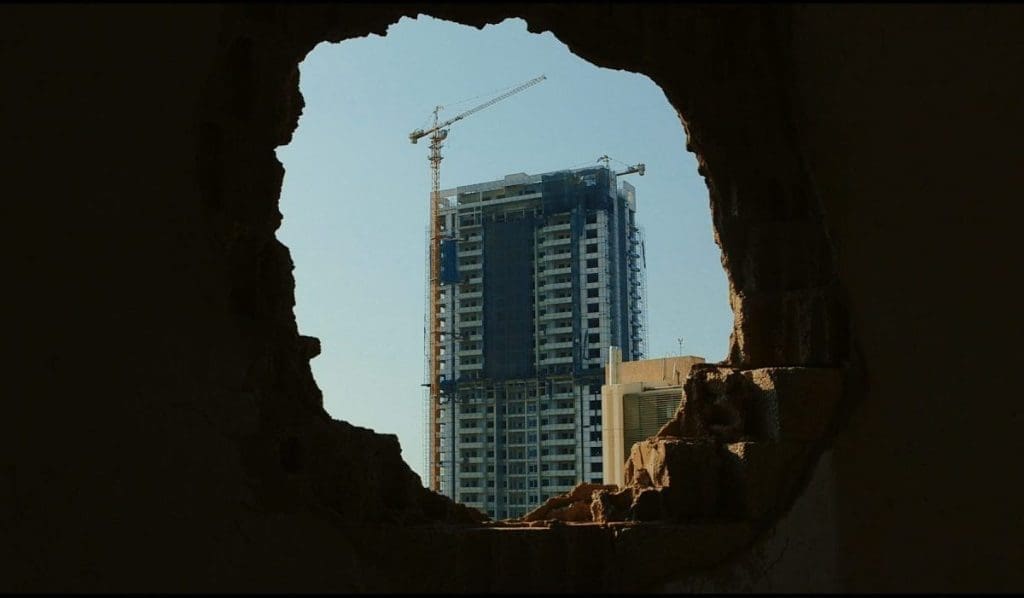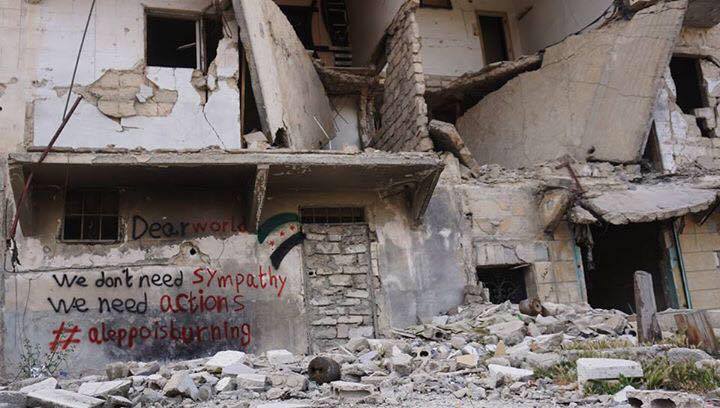Transcribed from the 30 January 2020 episode of This is Hell! Radio (Chicago) and printed with permission. Edited for space and readability. Listen to the whole interview:
The built environment doesn’t build itself. There are lots and lots of actors, which means there are lots of people who have an ability to make a change.
Chuck Mertz: We all contribute to climate change. You, me, everybody. We’re all directly or indirectly responsible for the continued emission of carbon which causes climate change. We walk the streets and see cars emitting greenhouse gas leading to climate change, and we dream of an all electric future where cars don’t add to our warming planet. So, while walking down that same street, why don’t we consider the climate change caused by the buildings that surround us—the construction and the ongoing emissions from that architecture?
Here to help us understand architecture’s impact on climate change, environmental researcher, architect, ecologist and educator Stephanie Carlisle wrote the Fast Company article “I’ve been polluting the planet for years. I’m not an oil exec, I’m an architect. And no amount of data or complex modeling will rectify the building industry’s staggering impact on the environment. Design culture itself needs to change.”
Welcome to This is Hell!, Stephanie.
Stephanie Carlisle: Hi, so nice to be here. Thank you.
CM: You write, “For the past eight years, I’ve spent every day of my professional life enabling an industry that is responsible for nearly forty percent of global climate emissions. I don’t work for an oil or gas company. I don’t work for an airline. I am an architect.”
Forty percent? Why do you think it is that we don’t recognize how much architecture and building contribute to climate change? Forty percent? Why are we focused so much on cars? Why do we focus so much on other things and not on the building trades?
SC: There are probably two reasons for that. One is that architecture, the building trades, construction—it’s a bit of a murky industry. Buildings are around us all the time. We rely on infrastructure for where we live, getting to work, going to school—all parts of our lives. But we don’t really see it as a separate industry. It’s so intertwined. A slightly more technical reason comes back to the way climate data gets reported. We tend to split up global economics and materials into these somewhat artificial industries. We talk about the energy sector, we talk about transportation, we talk about agriculture. And that’s all true and important—but the building industry is interesting because it touches lots and lots of sectors. That can be a hard one for us to wrap our heads around, as designers but also as consumers of architecture and the built environment, and folks who are directly responsible for decisionmaking.
CM: Why does that compartmentalization happen? Why do we get this compartmentalization when it comes to different sectors and how they contribute to climate change? And does that become an obstacle to us understanding what is causing climate change?
SC: It is an obstacle. Probably the simplest explanation is economics. Carbon accounting, for a long time, has been connected to who makes things and who pays for things. A lot of carbon footprinting or carbon accounting has tracked, at least academically, with an idea of a carbon tax. When we make that conceptual framework, carbon emissions have to be allocated to a person. It’s someone’s responsibility, it’s someone’s fault, they should pay for those emissions. The golden rule for modelers is you don’t double-count.
That’s not wrong, but it’s a very particular economic construct. To put it much more plainly, the construct I’m interested in is where we have agency and where we have power to make positive reductions in carbon emissions. While architects are not the sole people responsible for making concrete or building coal plants or manufacturing steel, we have a lot of power to shape what those materials are, how they are made, which ones we spec, and ultimately what gets built.
I’m really interested in this basic and very obvious observation that the built environment doesn’t build itself. There are lots and lots of actors, which means there are lots of people who have an ability to make a change.
CM: Trying to find someone who is responsible for carbon emissions—that seems to fall into the idea of focusing more on individual than collective contributions to climate change. We’ve been talking on our show for a few years now about all of our complicity in climate change.
For you, how difficult was it to recognize how you, too, contribute to climate change as an architect? And even though you are willing to admit that you contribute to this, does that become an obstacle to noticing the collective contribution to climate change?
SC: For me, this has been an emotional journey, both reckoning with these numbers—more and more, I like to speak very plainly, to put the facts on the table and see how we deal with them. This question of the individual versus the collective—or individual responsibility for systemic and structural causes of climate change—is a really important debate. Both of them matter deeply. Also, an over-focus on individual decisionmaking or consumerism traps people, and frankly it distracts from some of the biggest perpetrators of climate change and corporations that are really responsible for the bulk of historical climate impacts.
As I grapple with this topic as an architect, and as I spend a lot of time talking to folks in the building industry more broadly, I have found myself in an in-between space that I don’t hear a lot of people talking about. I go to work, I sit down at my computer, I’m working on a project, and I’m working with a team of lots of people collaboratively, and we’re individually making lots of decisions that have a huge impact—a much larger impact than the impact I, Stephanie Carlisle, personally would have in buying a t-shirt or making a food decision, or a decision about the energy at my house.
All those things matter, but there are some individuals in positions where we can make an incredible difference—but we’ve told ourselves that we don’t have any power. We’ve told ourselves that we’re not really in charge, because of course we’re not in a perfect system. We don’t have all the power. Architects oscillate between two poles: saying we’re of great cultural importance, architecture really matters—but when we’re put on the spot and asked what we’re doing, it becomes “I’m in the service industry; I can’t make all those decisions.” And it’s true: I’m beholden to clients. We’re in a very tricky space, wanting cultural power but not being willing to deal with the responsibilities that go with making decisions that are large and statistically significant.
I like throwing out that number: forty percent of global carbon emissions are directly connected to the built environment—and for architects and engineers, these emissions are connected to drawings that we made, specifications we put out, the day-to-day of our work life.
What we need right now is not a couple green buildings. That’s not the magnitude of what we’re talking about here. We need a complete change in how we think about construction and how we build the built environment.
CM: Architecture is about daily living. It is about the design of living. Corbusier, when he came up with the Garden City—it wasn’t just about making fancy buildings in a nice place, he was trying to think of a new way for people to live: in high-rises with open areas around them where people could live in a dense area but still enjoy nature.
Architecture is about designing for living. How much does the normal public, the average person, realize that architecture designs the way we live, or how much of an impact architecture has on our daily life?
SC: We can think about it in terms of the culture of a city—when you’re in a beautiful place, when your house feels good. We understand now that principles like ample daylight and quality air affect the way children learn in school, the quality of care in a hospital. So on some level, most people understand it and think about it. But when it comes to the more nuanced levels—the impact on climate change is a nearly invisible one.
Health and toxicity is a topic I do a lot of work on, because it’s really important. And I’m interested in how that topic intersects with climate concerns. But it’s easy to point to chemical off-gassing because you can smell it, or there’s something you can see and say, “What is this material? What is it doing to my health? Is this room too dark? Is it smoky?” Carbon is a harder thing for people to wrap their heads around.
A topic I grapple with is the difference between operational carbon and embodied carbon. With one, we’re used to thinking about energy and the relationship between energy and climate change. We’re much less used to grappling with how all these things we’re surrounded by—the steel, the wood flooring, the bricks—are made, or the magnitude of the impact all that industry has on the climate.
CM: You write, “The environmental impacts of the built environment are staggering. Although it’s become mainstream to discuss energy efficiency and advocate for minimizing those impacts, architects, engineers, and planners have yet to truly reckon with the magnitude and consequences of everyday design decisions.”
How much does this reckoning threaten the livelihoods of architects, engineers, and planners? Is there something that makes people in the building industries not want to have that reckoning?
SC: I don’t think it should be a threat, and I don’t think there’s any innate conflict there, per se. But this disconnect has been damaging. There are a lot of people who care enormously about climate change, but they don’t see any connection between their climate concern and the day-to-day act of designing buildings. They understand that there are climate repercussions for those decisions, but they don’t know the best decisions to make. They’re probably not running models, or getting the feedback they need, so the design process and the design culture marches on. Caring about a topic but not being able to translate it into your day-to-day is also really damaging for designers, though, so folks are asking how to get that feedback.
You’d never go through a whole design process without running cost estimates. One of my basic obligations to a client is to make sure you can actually build the building that I’m designing. We run cost estimates over and over again. It’s rougher in the beginning, more ballpark, and gets more nuanced at the end. Energy modeling is starting to be done more and more, so that you know you’ll meet code. We’re required to understand the performance and repercussions of buildings. I don’t understand why architects are not required—and given more opportunities—to understand the carbon repercussions of the decisions they are making.
What people need is feedback. This recalibration of our concerns and interests and goals with the techniques and methods to be able to meet those targets—this is at the heart of what needs to change in the design process. Architects have never really been asked to do that. It’s not been part of code, it’s not been part of regulation. Some clients will ask for it—some are nervous. But it’s still really a new topic. So folks are really trying to wrap their heads around it—and wrap their heads around what it would mean to do it for all projects. What we need right now is not a couple green buildings. That’s not the magnitude of what we’re talking about here. We need a complete change in how we think about construction and how we build the built environment.
Architecture, buildings, and infrastructure are not like other kinds of consumer products. I could argue that we should all have fewer pairs of jeans, and we probably all should. That would decrease the carbon footprint of that sector. I’m not prepared to say that people don’t deserve high quality housing and healthcare and hospitals and schools. If we are going to provide those services, and at a global scale, there is going to be a great deal of construction. The question is how we do that construction, and whether it’s in a way that makes a difference and doesn’t perpetuate climate change.
CM: Does this mean that we have to completely restructure the curriculum, the education of the building trades and architecture? You’re an educator. Does all that need to be completely changed due to climate change?
SC: I think so. It’s a realignment. In my heart I believe that, but it also implies that what we need to be doing is totally different from how architects have thought about architecture in the past—and I think that’s actually not true. Architects love thinking about materials and how they are made, and have really diverse perspectives on the design practice. Climate literacy really needs to be present in all schools of architecture.
For example, architecture schools are accredited. We have an organizational list that says what needs to be included in an architectural education, and knowledge about climate change and embodied carbon is not on that list. That needs to change right away. Every school of architecture should have a course, and I would hope more than one, that prepares students not just to evaluate their own design decisions and make this part of design, but also to communicate in a reasonable way about climate: to talk to people, to talk to their clients, to be able to have an actual conversation. When we don’t do the work within our own industry, we’re really hamstringing ourselves. There are a lot of folks who want to engage in this topic, but they don’t really know how and they weren’t trained to do so.
We have very few mechanisms in place, from a policy perspective and an economic perspective, to know where that wood you got at Home Depot came from. You don’t know if it was illegally harvested. You don’t know if it came from a really sustainably managed forest.
CM: You write, “While architects are not fully responsible for steel manufacturing or concrete production per se, there is a direct line from the material specifications that architects write to the steel mills of China, the coal mines of Appalachia, the brick kilns of India, or the clear-cut forests of the Pacific Northwest or the Amazon.”
Do architects not reckon with their contributions to climate change for the same reasons all of us don’t? That is, the steel mills of China, coal mines of Appalachia, brick kilns of India, and the clear-cut forests of the Pacific Northwest or the Amazon are far off places that architects never visit. Is resource exploitation being made invisible to those making decisions when it comes to architecture, just as it has been made invisible to all of us in the Western world who don’t see that resource exploitation?
SC: Absolutely. We don’t see that exploitation when it’s far away—and we don’t see that exploitation when it’s in our backyards. The environmental justice issues around material manufacturing and extraction are not only happening in the Amazon. There is an incredible range of behaviors, let’s say, around any single material. One thing that frustrates designers is a real lack of transparency around this. We treat materials like commodities, and feel we have no ability to know where they’re coming from, what kind of labor practices were behind them—even the most basic pieces of information that folks would expect an architect or a contractor to know about a material is completely unknown.
A great example is wood. This is probably the most contentious one to talk about, so I surprised I’m bringing it up. But we have very few mechanisms in place, from a policy perspective and an economic perspective, to know where that wood you got at Home Depot came from. You don’t know if it was illegally harvested. You don’t know if it came from a really sustainably managed forest. I don’t want to imply that all material extraction is bad or damaging. But it frustrates me that we don’t have transparency in the industry. Then we also don’t have a way to celebrate people who are doing good practices.
We’re forced into an averaged-out middle ground that doesn’t support innovation—it doesn’t allow us to move forward, and it’s really unnecessarily abstract.
CM: I worked at a loading dock under the table in San Francisco years ago, and we imported tchotchkes from Thailand. Thailand is rainforest—all the wood was rainforest wood. I saw some of our products at a Greenpeace store once, and I was shocked. I told the person who was working there that it was rainforest wood, and they had no idea. Even people who really work and concentrate on this stuff—this can get by anybody. Nobody knows where wood is coming from.
You write, “Broadly speaking, there are two ways of measuring the emissions caused by buildings: operational carbon (the emissions associated with the energy used to operate a building) and embodied carbon (the emissions associated with materials and construction processes throughout the whole life cycle of a building). We’ve come to recognize that it is not enough for architects and engineers to focus solely on operational carbon.”
Why was the operational carbon recognized but the embodied carbon not acknowledged as a contributor to carbon emissions? Was this an intentional, purposeful ignoring of the environmental cost of the construction process? Was it an attempt to give the impression that architecture was addressing climate change? Was this greenwashing? Why was this the case?
SC: First of all, operational carbon is really important. These percentages keep changing, but right now operational carbon is about twenty-eight percent of global carbon emissions. We use a lot of energy to operate buildings, to run infrastructure, and it really matters where that energy comes from. So we should be talking about operational carbon. Folks have taken the lead on that for a long time.
Embodied energy is just harder. Everybody gets a utility bill. Every building owner, every institutional client, pays for that energy and they know (or could look up and find out) how much electricity they are using, how much natural gas they are using, whether there’s a wood-burning stove. For a long time, there has been a lot of data and a lot of tracking on energy grids. Energy grids are wildly complicated, but the data is there. Embodied carbon is just a murkier, trickier space. It’s not regulated. The information hasn’t been widely available until recently. The tools are hard to use. And you don’t pay for it.
That’s actually the biggest reason. But now that we have more tools and more data to measure embodied carbon, folks are faced with those numbers and have to look at them. I hope this can be seen in a positive light: of being another way we can make a difference. But it’s also true that this is yet another thing that architects and engineers have to grapple with. We have so many things that we have to grapple with. That’s part of the whole issue. It’s not necessarily people trying to greenwash their buildings—which of course happens. But architects are really asked to do a lot. We have to protect health and safety, we have to build buildings that are beautiful, that last, that uplift the human spirit, that don’t give you cancer, that keep you perfectly thermally comfortable but don’t cause climate change. It’s a staggering thing that architects and engineers are trying to do when we build a building in a way that’s ethical.
It’s really challenging. But I think we can handle that challenge, and I think it’s time. We have to talk about it, because frankly there is so much global construction: this is such a big and important industry, and it’s done by a relatively small number of people. And there’s no way for us to meet any of our global carbon targets without addressing embodied carbon. We have to deal with it even though it’s really hard.
CM: You write, “When we look at new buildings anticipated to be built between now and 2050, embodied carbon (also known as up-front carbon because it is released before a building is even occupied) is projected to account for nearly half of total new construction emissions. For practicing architects, engineers, policymakers, and anyone who cares about climate strategy, this should give us pause.”
There is a relatively new phenomenon of buildings being built and never even being occupied—only used speculative real estate investments, with occupancy not as much of a priority. Does architecture contribute more to climate change when buildings are built as speculative investment properties, as commodities, and not as much as actual residences?
SC: It’s a hard thing to wrap my head around or try and justify. The most just way to think about it—which is not a way that any of us, professionally, are prepared to think about buildings. Typically, we have a client and they tell us what we’re building. I don’t go to a client as say, “You shouldn’t build a school, you should build a health clinic.” That might be a position developers or other speculators are in, but that’s not where I’m at. Most architects enter a project when a lot of decisions about what and where the project might be have been locked in, and there’s a real functional need for that client.
It’s not appropriate for us to all just sit around and wait to be regulated into doing something, or wait for a carbon tax, or wait for some other economic mechanism. We’re all too smart to sit around and do nothing.
When we think about the built environment more broadly, or from a policy perspective, we effectively have a carbon budget to work with if we want to stave off the most horrific effects of climate change. We need to ask where we want to “spend” carbon. Do we want to spend it on speculative real estate or do we want to spend it on raising the level of equitable housing for all people? I don’t think architects and engineers tend to make those decisions.
If we had more transparency about embodied carbon or more policy and regulation around this topic, maybe there would be a way to exercise some political mechanisms that would nudge the market, because right now it’s really just whatever people can afford. You really don’t pay for that carbon in any specific way, even though it affects all of us. It’s pretty depressing, actually. It really is.
CM: You write, “The Paris climate change report makes the case for the urgent need for action and also painstakingly lays out strategies that can help us bridge this gap while also focusing on creating transformational change and just transition. It’s a time for the building industry to act.”
But when it comes to their bottom line, why should the building industry act? In the long term, does the building industry need to create transformational change and a just transition in order to survive?
SC: If there were economic or regulatory mechanisms in place, they would. Right now there are not, so I hope that will change very soon. The first embodied carbon code in the world, I believe, just passed a few months ago in Marin County, California, and there are several working their way slowly at state levels. Right now they just address some basic structural materials, as a way to get started. They say something like, ‘The concrete in your building cannot exceed this number of kilograms of CO2 per meter squared,’—it would provide a cap. Find that concrete, make it happen, or you can’t build that building.
That is a very radical thing. When that sort of code goes into place, or when there’s an economic benefit for lower-carbon buildings, there will be incentive for the construction industry to address this topic. But it needs to happen, because it’s not appropriate for us to all just sit around and wait to be regulated into doing something, or wait for a carbon tax, or wait for some other economic mechanism. We’re all too smart to sit around and do nothing. The math isn’t going to work out. We’re not going to make it in time if we all just sit around and don’t do anything. There really is an ethical imperative.
Architects, for a really long time, have really not had incentive—this gets into a whole deep topic about who we work for and how contracts are structured. But the way that most projects happen does not foster a lot of collaboration between the building trades and designers. It often sets them up as antagonistic to each other. Probably one of the biggest challenges to us making really radical transformation is finding a way for designers, engineers, clients, and the building trades to see themselves as being in alignment. We have to find a way in which low-carbon buildings are supported by the construction industry and by the trades and by unions. If that could happen we will make an incredible amount of progress. There’s no reason, in my mind, why those things need to be in conflict with each other.
The carbon conversation for building materials has not been using any sort of just transition framework at all. That’s really, really new for people to grapple with and think about.
CM: Can architecture as we know it survive climate change?
SC: No. No, it can’t. But also, architecture and the way that we build has radically transformed in the past, and we have to believe that it can radically transform in the future. There is no reason for us to think that we should be building buildings the way we do right now ten, twenty, or thirty years from now. There’s no reason. It should change. It’s always changing. It just needs to change in a direction that moves us towards climate progress, that moves us towards equity, and moves us towards a world we actually want to live in.
CM: Thank you so much for being on our show.
SC: Thank you, I always appreciate talking about this topic, and all the work that you do.
Featured image: promotional still from the documentary film Taste of Cement by Ziad Kalthoum (2017)





